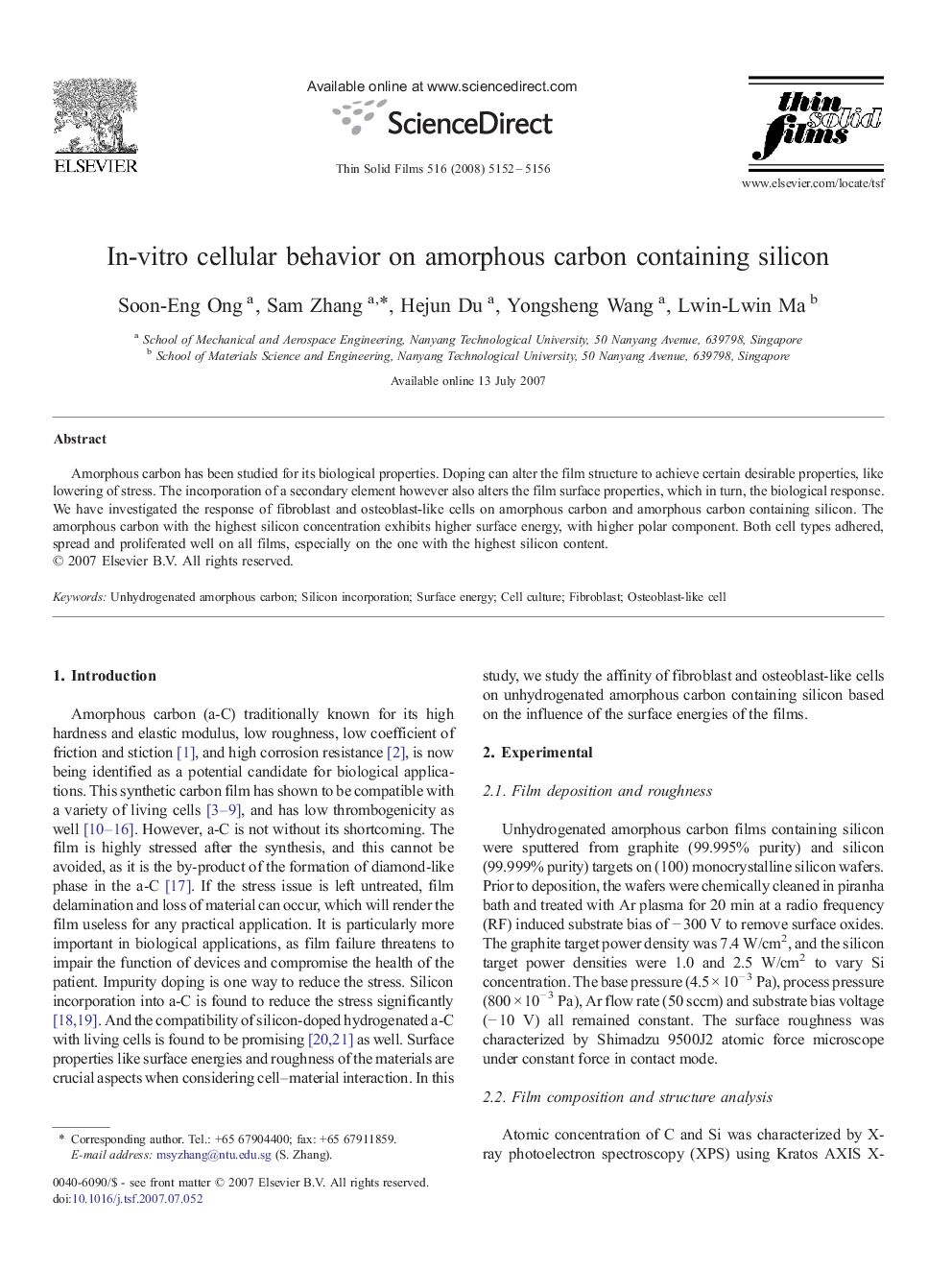| Article ID | Journal | Published Year | Pages | File Type |
|---|---|---|---|---|
| 1674910 | Thin Solid Films | 2008 | 5 Pages |
Abstract
Amorphous carbon has been studied for its biological properties. Doping can alter the film structure to achieve certain desirable properties, like lowering of stress. The incorporation of a secondary element however also alters the film surface properties, which in turn, the biological response. We have investigated the response of fibroblast and osteoblast-like cells on amorphous carbon and amorphous carbon containing silicon. The amorphous carbon with the highest silicon concentration exhibits higher surface energy, with higher polar component. Both cell types adhered, spread and proliferated well on all films, especially on the one with the highest silicon content.
Related Topics
Physical Sciences and Engineering
Materials Science
Nanotechnology
Authors
Soon-Eng Ong, Sam Zhang, Hejun Du, Yongsheng Wang, Lwin-Lwin Ma,
